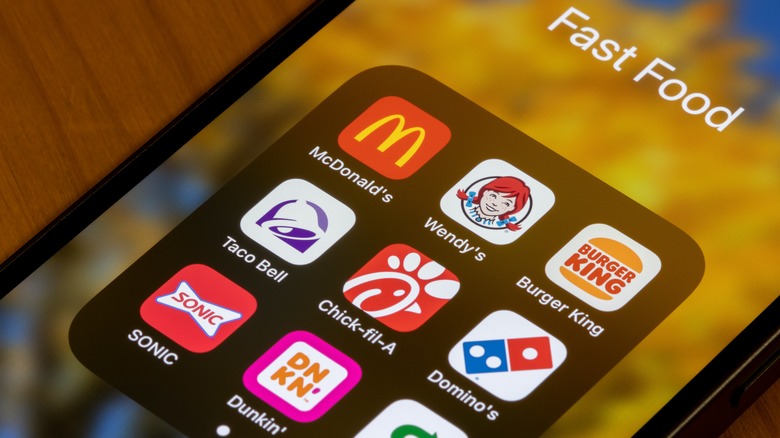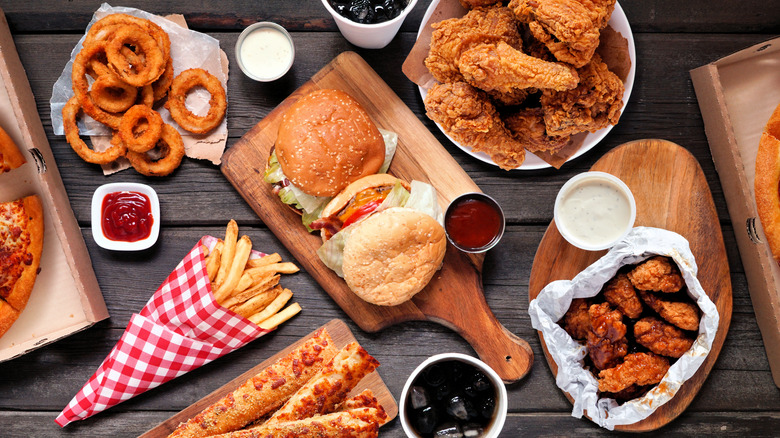The Real Reason We Might Be Living In A 'Golden Era Of Fast Food'
The concept of "fast food" in American culture goes back to 1921 with the first opening of White Castle, a fast-food chain (via Smithsonian Magazine). Still, most people associate the cementing of fast-food restaurants within American culture with the '50s and the '60s, especially after World War II. The rise of car culture and the highway system meant that many Americans had access to faster, sleeker cars and more places to go and see. Hamburger stands and barbeque joints began to overhaul their businesses to provide newly minted drivers with prompt service and cheap food, with modern-day fast food juggernaut McDonald's as one such restaurant to transform into a well-greased, hamburger-slinging drive-in, Library of Congress tells us.
With drive-thru restaurants popping up along America's highways to attract hungry drivers, it's not hard to see how some could see this as a "golden era" of fast food. Yet, according to QSR Magazine, we may enter or even be in the midst of another "golden era" of fast food. This claim is rooted in the economic and labor factors Americans face. As food prices continue to rise and many restaurants outside the quick-service industry have trouble finding employees, fast-food options are the next best thing. Their selections of bundle meals and relatively cheap food items offer comfort to many Americans, alongside bringing in increased profit to fast-food restaurants.
But what would the impact of a "golden age" of fast food have in modern America?
A golden era may not be as shiny as we think
The claim that we live in the fast food glory days is not a relatively new idea. Thrillist, in 2016, noted that we were living in another "golden age" of fast food even before the pandemic, citing examples of mainstream fast-food companies doing their best to appeal to millennial consumers through "gimmicks" and introducing healthier alternatives like fruit and removing GMO-based products.
But what about the impact on health from this increased focus on fast food? According to the CDC, 36.3% of children in America consumed fast food on any given day from 2015 to 2018, with 13.8% of their daily calories coming mainly from fast-food items. Another report from the CDC noted that the obesity prevalence in the United States was 41.9% from 2017 to 2020. This information can cast a worrying light on the idea that we are entering another supposed "golden age" of fast food. Indeed, with more people staying home and ordering out due to the lockdowns, leaning too heavily on fast food could lead to much more severe health concerns.
It would seem then that the impact of a "golden age" in fast food would be twofold: More customers could mean more diversification of items that are potentially healthier than your average fries or chicken nuggets, while on the other hand, the continued focus and dependence on fast food may cause serious health problems in younger and older Americans (via Medical News Today).

